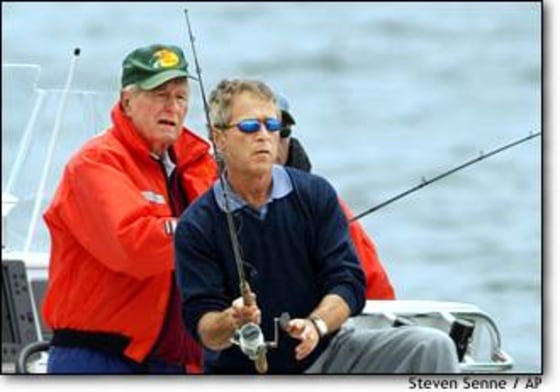The road map to peace lies in tatters, the “battle for Iraq” is far from over and the economy is still shedding jobs. Welcome back to reality. The financial conditions may be ripe, but the long-awaited economic bounceback is taking its sweet time to get here.
To many economists Friday’s sharp and unexpected drop in consumer sentiment was sadly reminiscent of 1991, when confidence quickly faded after the elation that followed a quick military victory over Iraq.
“It’s almost a perfect repeat,” said David Rosenberg, chief economist of Merrill Lynch. In 1991, he said, “We came out of the gates on confidence with tremendous euphoria, but the postwar bounce was the peak of the year. … You don’t want to get too carried away by one day’s event, but consumers have got to be asking, Where is the bounce?”
The parallels with 1991 are not exact. For one thing, when the 43-day Gulf War ended in early 1991, the U.S. economy was still mired in recession. When Baghdad fell two months ago, the economy had been growing for six straight quarters.
“What you had here was a really different dynamic,” said Brian Horrigan, chief economist for investment advisors Loomis Sayles, which has $53 billion under management. “The recovery was well under way in first half of 2002 and completely fell apart at the end of 2002. I think the whole situation (in Iraq) largely sabotaged the recovery.”
He said Friday’s drop in consumer sentiment, which sent was a bit puzzling because it was caused mainly by a loss of confidence in future conditions. This despite a sharp run-up in stock prices since March, a drop in interest rates to their lowest levels since the 1950s and a big tax cut in the pipeline, among other factors promising to drive economic growth.
Horrigan speculated that consumers are getting spooked by “all this endless talk about deflation” as well as the flare-up of violence in the Middle East.
“Maybe these things are getting people a little nervous again,” he said. “The reality is these kinds of threats are not going to disappear any time soon.”
David Wyss, chief economist for Standard & Poor’s, said the economy should pick up speed in the second half of the year, boosted by tax cuts and lower interest rates, including a widely expected move by the Federal Reserve when it meets June 25. This week’s report of 0.1 percent increase in May retail sales was “healthy but not great,” he said, especially after factoring in the impact of falling gasoline prices.
But the lingering weakness in job growth appears to be weighing heavily on consumers’ minds. New claims for unemployment, reported weekly, have remained stubbornly above the 400,000 level for four months, indicating that the economy continues to lose jobs.
“People are still seeing layoffs,” Wyss said. “Their friends don’t have jobs. They were thinking things are going to get better. … We’re taking this corner awfully wide.”
“Unemployment is obviously the key,” said Lehman Bros. economist Drew Matus. “There is a lot of extra capacity out there. If don’t get the economy to grow above its potential you’re just not going to drive down the unemployment rate, and will maintain this very weak, tepid growth.”
He expects the Fed to cut the benchmark overnight lending rate a half-point this month to 0.75 percent, a fresh 32-year low, and possibly the lowest it can go without causing havoc in the money-market industry.
Still, if history is any guide, the pain in the job market could continue for some time, economists say.
After the 1991 Gulf War, the recession ended but the jobless rate kept rising for 15 months. This time around, the jobless rate, now at 6.1 percent, is likely to continue rising through the end of the year, many economists say. That would be a full two years after the recession supposedly ended.
“Even if the economy follows the script and starts to improve and we get some job growth, the unemployment rate should keep rising until early next year,” said Mark Zandi, chief economist for Economy.com, a forecasting firm. And with the stock market up 23 percent in three months, it may be unrealistic to expect the rally to go any further for a while. In 1991, he noted, the stock market rallied after the war’s end then “treaded water” for more than six months until it became clear the economy was going to recover.
“I think that is a pretty good road map for what is likely to happen this time around,” he said.
